Next Saturday, November 22, the Institute will hold the event ‘La recerca en salut surt al carrer’, which includes an escape room, medical tests, CPR workshops, and a demonstration of how an ambulance works.
The Institut d’Investigació Sanitària Pere Virgili (IISPV) will organize the fun event ‘La recerca en salut surt al carrer’ on Saturday morning, November 22, in the center of Tarragona. This initiative is part of the celebrations for the Institute’s 20th anniversary. It was already held in Reus last October and was very well received, with more than 500 people taking part in the activities. Now, IISPV brings the event to Tarragona, specifically to Plaça Corsini and the Mercat Central. Activities will include an escape room about the Institute, non-invasive medical tests, CPR workshops with mannequins, and a demonstration of how an ambulance works. All activities are free, but participants must register in advance on the IISPV website to join the escape room.
The event is organized in collaboration with the Tarragona City Council, Tarragona Markets, and the Servei d’Emergències Mèdiques (SEM) of the Generalitat. Its goal is to help citizens learn more about the work of this biomedical research institute, which has been operating in southern Catalonia for 20 years. The activities planned are:
Escape room ‘Investiga… I ajuda’ns!’
Four groups of five people will help IISPV stop an attack that aims to sabotage the work of its researchers. Each group will face different challenges to protect the four research areas of IISPV: metabolism and nutrition, oncology, mental health and neurosciences, and infection, immunity and environment. The activity lasts about 45 minutes and requires prior registration. It will take place at Tarragona Espai Comerç”, and the meeting point is the entrance to the Central Market on Cristòfor Colom Street. Time slots are: 10:30, 11:30 and 12:30.
Medical tests ‘Aquí et cuidem!’
Throughout the morning, the interior of Tarragona’s Central Market will host several non-invasive medical tests, available to anyone interested:
Workshops ‘Anima’t i reanima!’
All morning long, Plaça Corsini will host the ‘Anima’t i reanima!’ workshops, led by professionals from IISPV and SEM. Using mannequins, participants will learn how to identify a cardiac arrest and how to perform CPR. They will also get to see how an ambulance works, with one on display in the square.
The Solidarity Walk ‘Let’s Take a Step Against Diabetes’ aims to raise awareness among the population about the importance of adopting healthy lifestyle habits and to support biomedical research carried out in the region. All the funds raised will go to the Diabetes and Associated Metabolic Diseases Research Group (DIAMET) at IISPV, which focuses on finding new knowledge and strategies to improve the prevention, diagnosis, and treatment of diabetes and other metabolic diseases.
“The Perafort Town Council reaffirms its commitment to health, solidarity, and medical research through this initiative—values we consider essential for the well-being of our citizens. The funds are allocated to the IISPV to support research and scientific progress in this field,” said the mayor of Perafort, Joan Martí Pla i Pla. The Perafort Town Council thanks all the individuals and organizations involved and invites everyone to join this solidarity cause. Taking a step against diabetes is taking a step for everyone’s health.
There are different types of diabetes, but the most common are type 1 and type 2. Type 1 diabetes affects about 0.2% of the population in Spain, and around 10% of diagnosed cases are in young people and children. Type 2 diabetes affects between 6% and 14% of the population. This percentage depends on the age group considered, but the older the person, the higher the incidence.
The director of the IISPV, Joan Vendrell, explains that “diabetes is not visible, but it can be controlled with information and a healthy lifestyle. In this sense, events like the walk are very valuable, as they help raise awareness about the disease and its impact, and also promote the work we do. Moreover, they are an opportunity for people to contribute to the development of the various research projects underway at the Institute.”
With a registration fee of €5, participants will receive a commemorative T-shirt, enjoy breakfast and drinks in Els Garidells, and take part in a raffle of products offered by the event’s sponsors after the walk. Registration is open until November 21st, 2025, through the following link: https://serveis.iispv.cat/events/desena-caminada-contra-la-diabetis
The Palau Firal and Congress Centre of Tarragona became a massive party this Saturday with the solidarity event Mamapop.
With more than 900 tickets sold and nearly 85% of the venue filled, all the profits from the concert will go directly to breast cancer research at the Pere Virgili Health Research Institute. Tarragona, 2 November 2025. The iconic songs from the sixties and seventies set the rhythm of solidarity this Saturday at the Palau Firal and Congress Centre of Tarragona.
Over 900 people took part in an emotional evening that once again showed how music can be a powerful tool for solidarity. With almost 85% of the venue full, Mamapop 2025 premiered its tenth show in Tarragona, featuring around thirty professionals on stage performing classics by Los Brincos, Nino Bravo, Marisol, Raphael, Duo Dinámico, Fórmula V and Camilo Sesto, among others.
Once again, all the money raised from Saturday’s concert will be used entirely for breast cancer research at the Pere Virgili Health Research Institute, which is celebrating its 20th anniversary this year. Manel Simon, director and founder of Mamapop, thanked “the collective effort of the audience, professionals, supporting organisations and volunteers who helped turn music and entertainment into research, hope and future.”
Mamapop Tarragona was made possible thanks to the support of Fundación Repsol, Factor Energia, Tarragona City Council, the Palau Firal and Congress Centre of Tarragona, Tarragona Provincial Council, the Port of Tarragona and Fundación La Caixa. Several companies and organisations also collaborated, including Rotary Club Tarragona, Tarragona Basketball Club and Nàstic de Tarragona.
This study is a step forward in the search for more accurate diagnostic and prognostic tools for prostate cancer
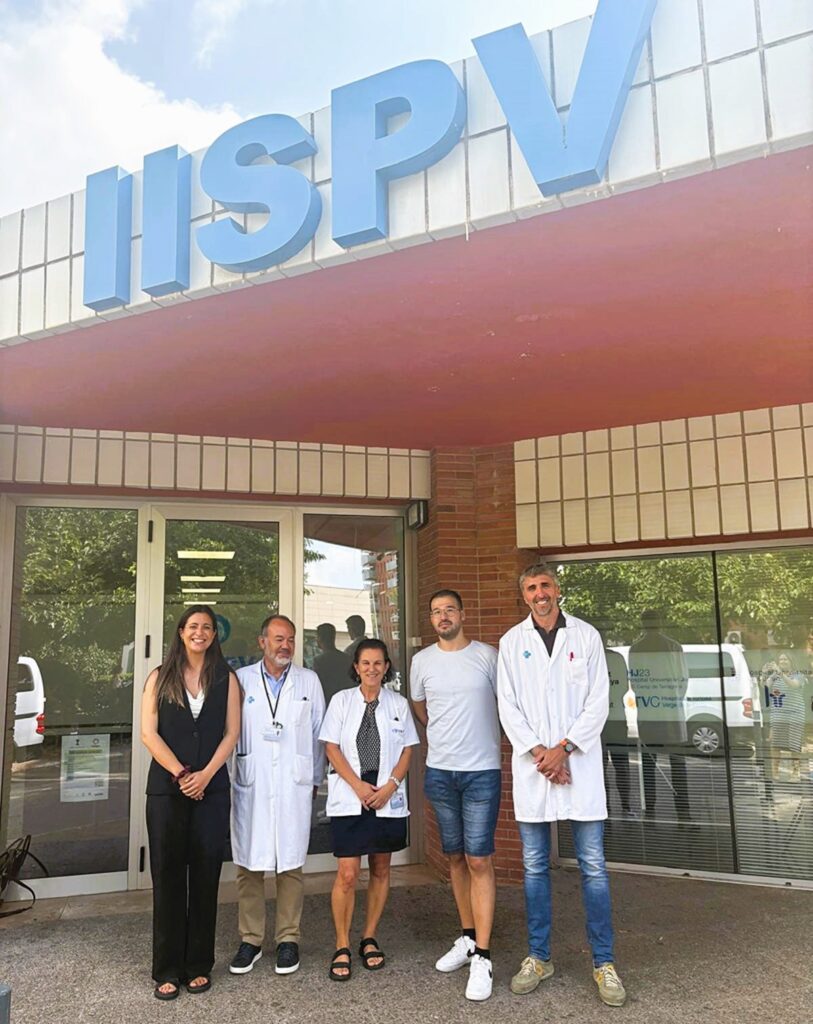
Researchers from the Institut d’Investigació Sanitària Pere Virgili (IISPV), in collaboration with the Urology Department at the Joan XXIII University Hospital in Tarragona, have made promising progress in improving the diagnosis and monitoring of prostate cancer. The study, led by Matilde Rodríguez Chacón and Xavier Ruiz-Plazas, a specialist from the Urology Department at the same hospital, both members of the Research Group on Disease Biomarkers and Molecular Mechanisms (DIBIOMEC), was recently published in the Journal of Urology, the official journal of the American Urological Association (AUA). The research explored a panel of biomarkers found in semen samples. In the cases studied, the results were promising when combined with traditional clinical variables. Preliminary data suggest that this approach could be useful in several clinical situations, including early detection, identifying patients at higher risk of recurrence after curative treatment, and monitoring patients under active surveillance for this type of cancer.
Prostate cancer is the most common tumor among men in the Tarragona region, with around 670 new cases each year. At the national level, more than 30,000 cases are diagnosed annually, making it one of the leading causes of cancer-related death in men. This advancement, co-authored by Dr. Alves-Santiago and Dr. Altuna-Coy, both members of the DIBIOMEC group, is an important step toward personalized medicine in urology. It offers more precise tools for early detection and individualized clinical decision-making. Although more prospective studies with a larger number of patients are needed, the results so far are very promising.
Link to the scientific publication: Alves-Santiago M, Altuna-Coy A, López-Ribelles P, Arreaza-Gil V, Segarra-Tomás J, Ascaso-Til H, Garcia-Fontgivell JF, Sánchez-Martín S, Bernal-Escoté X, Ruiz-Plazas X, Chacón MR. A Semen Panel Signature Comprising sTWEAK Cytokine Levels and Expression of exomiR-221-3p and exomiR-222-3p for Assessing Prostate Cancer Prognosis, Diagnostic Utility, and Detection of Upgrading During Active Surveillance. J Urol. 2025 Aug 27:101097JU0000000000004749. doi: 10.1097/JU.0000000000004749. Epub ahead of print. PMID: 40863180.
For people who smoke 20 or more cigarettes a day, the risk doubles. These are the findings of a study led by the Human Nutrition Unit at URV.
Smoking significantly increases the risk of developing type 2 diabetes. However, drinking alcohol—even in small amounts—does not offer any protection against this disease, despite what some previous studies suggested. This has been confirmed by a new international study led by Indira Paz-Graniel, a researcher at the Human Nutrition Unit of Universitat Rovira i Virgili (URV), in collaboration with the Nutritional Epidemiology Research team from Université Sorbonne Paris Nord (France).

The research studied the combined effects of tobacco and alcohol on the development of type 2 diabetes, a topic that had not been explored much until now. The goal was to find out whether both habits, beyond their individual impact, could have a combined effect on the risk of getting the disease.
To do this, data from more than 110,000 participants in the NutriNet-Santé cohort—one of the largest public health studies in Europe—were used. Over an average follow-up of 7.5 years, 1,175 new cases of type 2 diabetes were diagnosed.
The results show that people who smoke or have smoked at some point have a 25% higher risk of developing type 2 diabetes compared to those who have never smoked. The risk is especially high for those who smoke 20 or more cigarettes a day, as they are twice as likely to develop the disease compared to light or moderate smokers.
The research team also found that low or moderate alcohol consumption was not linked to any protective effect against type 2 diabetes. These findings go against previous studies that suggested drinking one glass of wine a day—or the equivalent—could reduce the risk of developing the disease.
When the combined use of tobacco and alcohol was analyzed, no additional increase in risk was found. This suggests that, at least in the studied population, both habits do not act together to raise the risk of diabetes.
“We know that smoking is a clear risk factor, but we were surprised to see that alcohol alone did not change the risk of diabetes,” said Indira Paz-Graniel. However, she warned that the results should be interpreted with caution, since the NutriNet-Santé cohort is mostly made up of women with a high level of education and healthy lifestyles. “More studies in diverse populations are needed to better understand the interaction between alcohol and nicotine,” she added.
The study also included Professor Jordi Salas-Salvadó, director of the Human Nutrition Unit at URV, and Professor Nancy Babio. Both are members of CIBERobn and the Pere Virgili Health Research Institute (IISPV), along with the lead researcher.
The results were published in the American Journal of Preventive Medicine (August 2025) and presented at the International Congress of Nutrition organized by the International Union of Nutritional Sciences (IUNS), recently held in Paris.
Reference: Paz-Graniel I, Kose J, Duquenne P, et al. Alcohol, smoking and their synergy as risk factors for incident Type 2 Diabetes. American Journal of Preventive Medicine. 2025 Jul 31:108011. doi:10.1016/j.amepre.2025.108011
Throughout the day, researchers and technical staff from the Institute carried out activities in different parts of Reus city centre to bring science closer to the public.
The Pere Virgili Institute for Health Research (IISPV) has closed the event ‘Health Research Hits the Streets’ with a very positive outcome. The event took place all day in several locations around Reus city centre. A total of 528 people participated in the scheduled activities, all designed to make biomedical research more accessible to the general public.

The event was organised to celebrate the 20th anniversary of the IISPV. The organisers highlighted the warm reception of all the activities. In this regard, Joan Vendrell, director of the IISPV, stated: “The high level of participation shows that people are interested in learning what we do in the labs. That’s why we are considering continuing with public activities that allow us to share our work with everyone.”
In total, four free activities were offered: an escape room, with 112 participants; a walking tour through the city centre, with 114 attendees; a space where over 77 people received medical tests; and a series of science workshops with experiments to explain how the human body works. This last activity, the only one that didn’t require prior registration, attracted more than 225 visitors.
The four activities took place in different areas of the city. The old hospital on Sant Joan Street hosted the escape room and the science workshops, bringing back its scientific role for one day. The medical tests were carried out at the Centre de Lectura, a popular meeting place for locals. Finally, the walking tour passed through streets such as Hospital Street, Santa Anna Avenue and Ample Street, where participants learned about buildings historically linked to health.


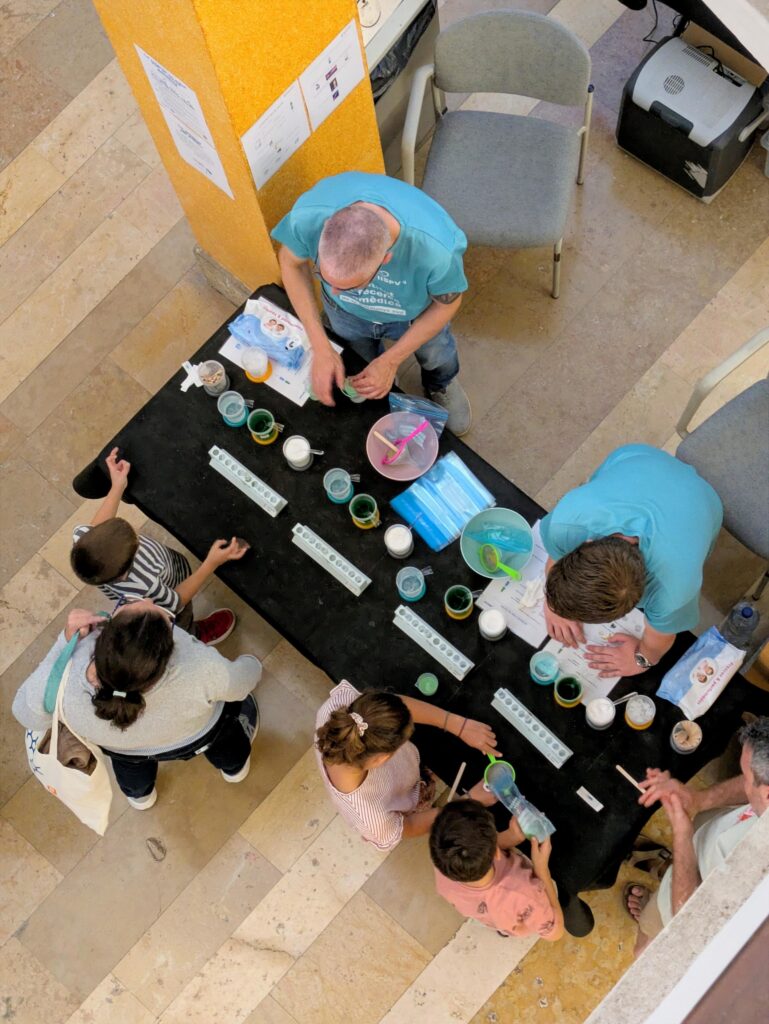
Around forty researchers and technical staff from the IISPV made this event possible. “These outreach activities are enriching for everyone involved. On one hand, they give people the chance to learn about health research directly from those working in laboratories. On the other hand, they allow us to understand people’s concerns and respond to them,” explained the director of the IISPV. The Reus City Council and the Centre de Lectura supported the initiative and helped promote the biomedical research carried out in the region, which is constantly developing new projects and studies to improve people’s health.
The 20th anniversary of the IISPV
“Health Research Hits the Streets” is one of several public activities organized to celebrate the 20th anniversary of this Institute, which has been working in the southern Catalonia area for the past 20 years. Throughout 2025, a series of events have been planned to explain not only what the IISPV does, but also how important and relevant biomedical research is for people’s lives.

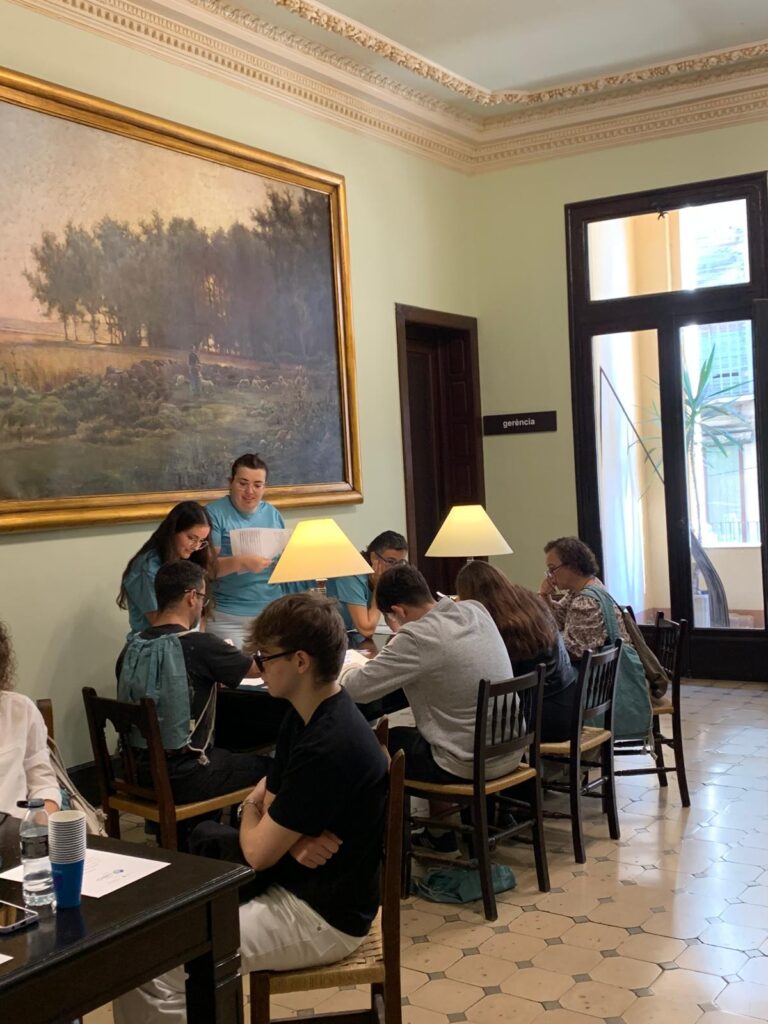
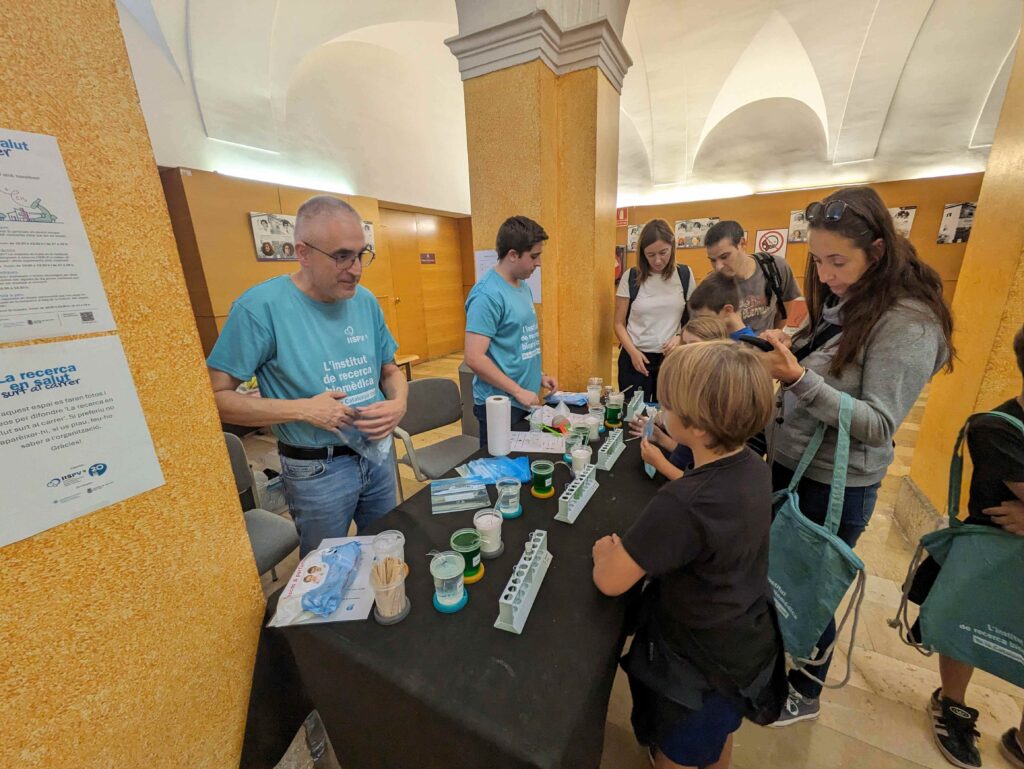

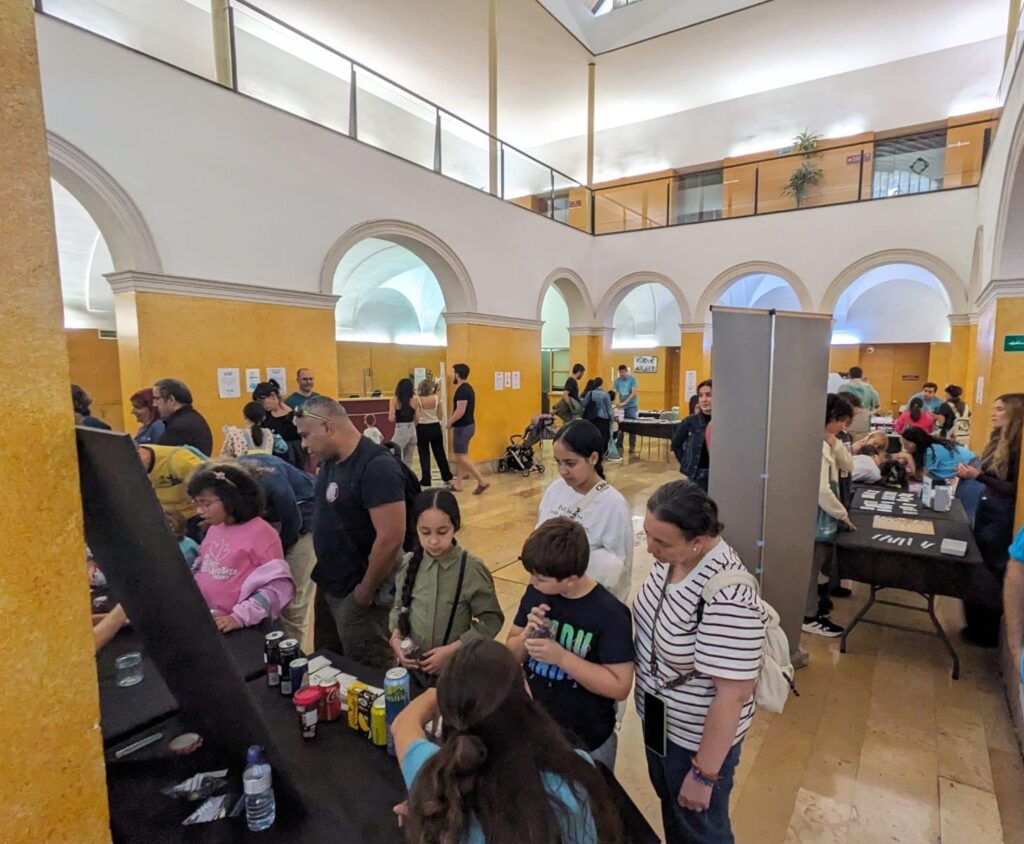
“Health Research Hits the Streets” is one of several public activities organized to celebrate the 20th anniversary of this Institute, which has been working in the southern Catalonia area for the past 20 years. Throughout 2025, a series of events have been planned to explain not only what the IISPV does, but also how important and relevant biomedical research is for people’s lives.
The anniversary celebration will end on 3 December with an institutional event at the Bartrina Theatre in Reus. During the event, the Institute’s new image will be presented, and there will be a talk by the well-known communicator and writer Elsa Punset, who specialises in leadership, creativity and team management. Registration for the event will soon be available on the IISPV website, and it will be chaired by the Minister of Research and Universities of the Government of Catalonia, Núria Montserrat.
Seven researchers spoke about studies in health, energy and the environment, and their impact on everyday life. This Friday afternoon and Saturday morning, a science workshop fair will take place at Corsini Square in Tarragona, the main event of the Researchers’ Night
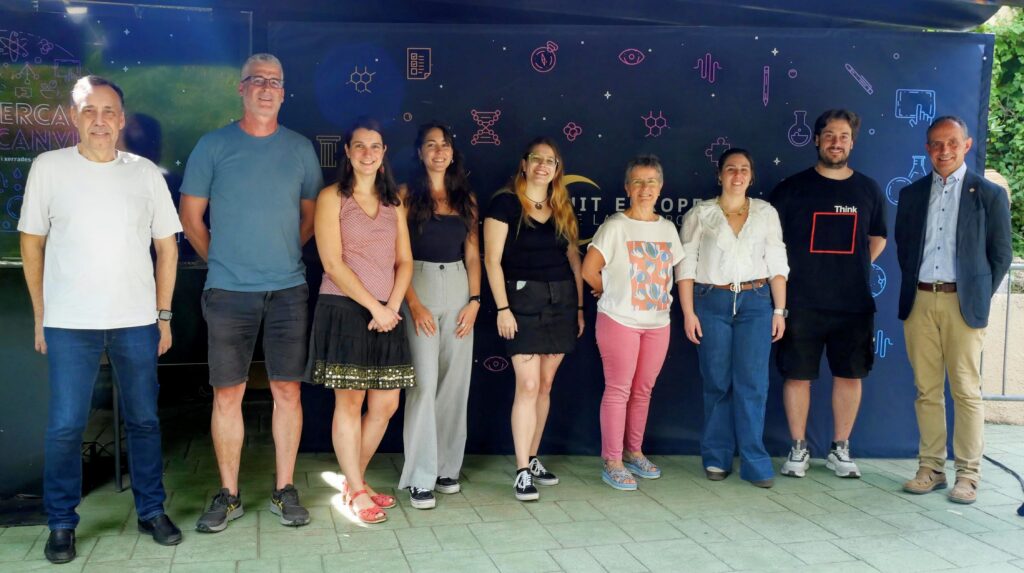
This Saturday, Racó de la Palma in Reus became a centre of scientific knowledge during the micro-talks “Research for Change”, a pre-event of the European Researchers’ Night attended by around eighty people. The event, organised by the Pere Virgili Health Research Institute (IISPV) with support from the Rovira i Virgili University (URV), brought together seven researchers from different local research centres who shared innovative advances in health, energy and environmental topics.
With a dynamic and informative format, each talk lasted ten minutes and explained, in a practical way, the results of scientific studies and how they affect people’s lives. For example, Cèlia Uroz, a researcher from URV, said that people ingest 20,000 microplastic particles per year, which is equal to one credit card per week, and spoke about their effects on the intestine. Marta Llorens, from the Catalan Institute of Chemical Research (ICIQ), explained how antibiotics work in the body and why it is important to take them carefully and follow the doctor’s instructions.
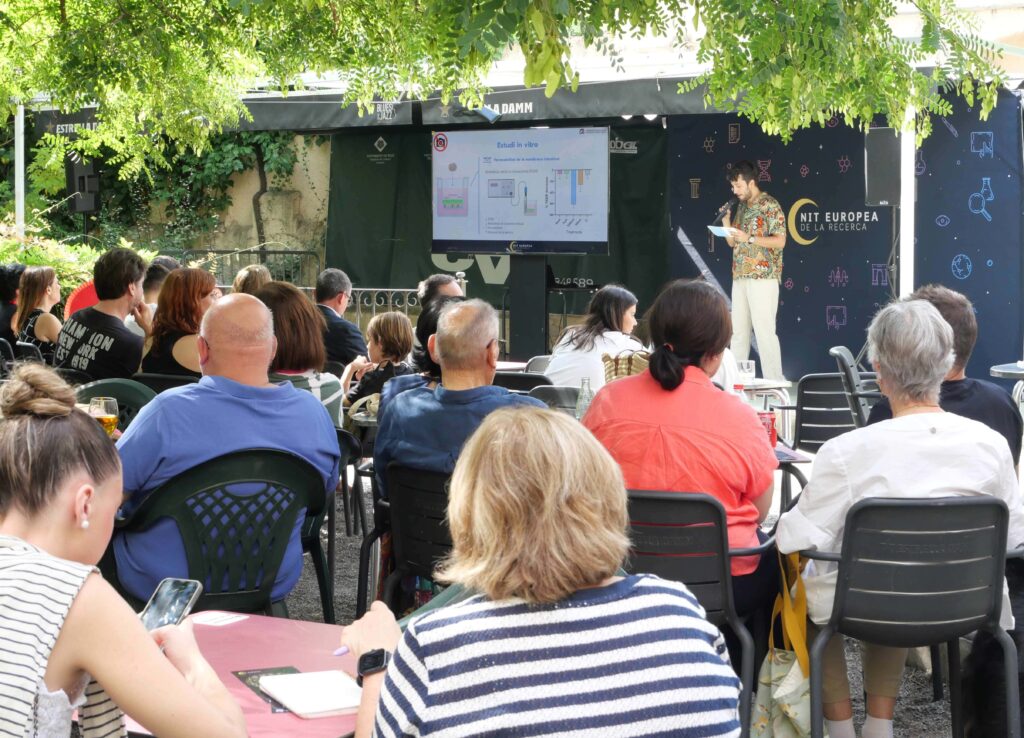
In the field of mental health, Elisabet Vilella, researcher at IISPV and the Pere Mata Institute, said that one in four people suffers from a mental health problem during their lifetime. She also talked about how mental health issues and psychiatric disorders can vary depending on age or gender.
The micro-talks highlighted the value of local research and its direct impact on daily life. There was also good interaction with the audience, who had the chance to ask questions to the researchers about the topics discussed.
The European Research Night events continue
These micro-talks were a prelude to European Research Night, an educational initiative centered around a science fair, which will take place on the afternoon of September 26 and the morning of September 27 in Tarragona’s Plaza Corsini, with the participation of more than 200 researchers from the URV and research institutes. Another preliminary activity is the family workshop “Much more than aesthetics,” on how obesity and diabetes affect the body, which will take place at the Viding Sant Jordi sports center in Tarragona.
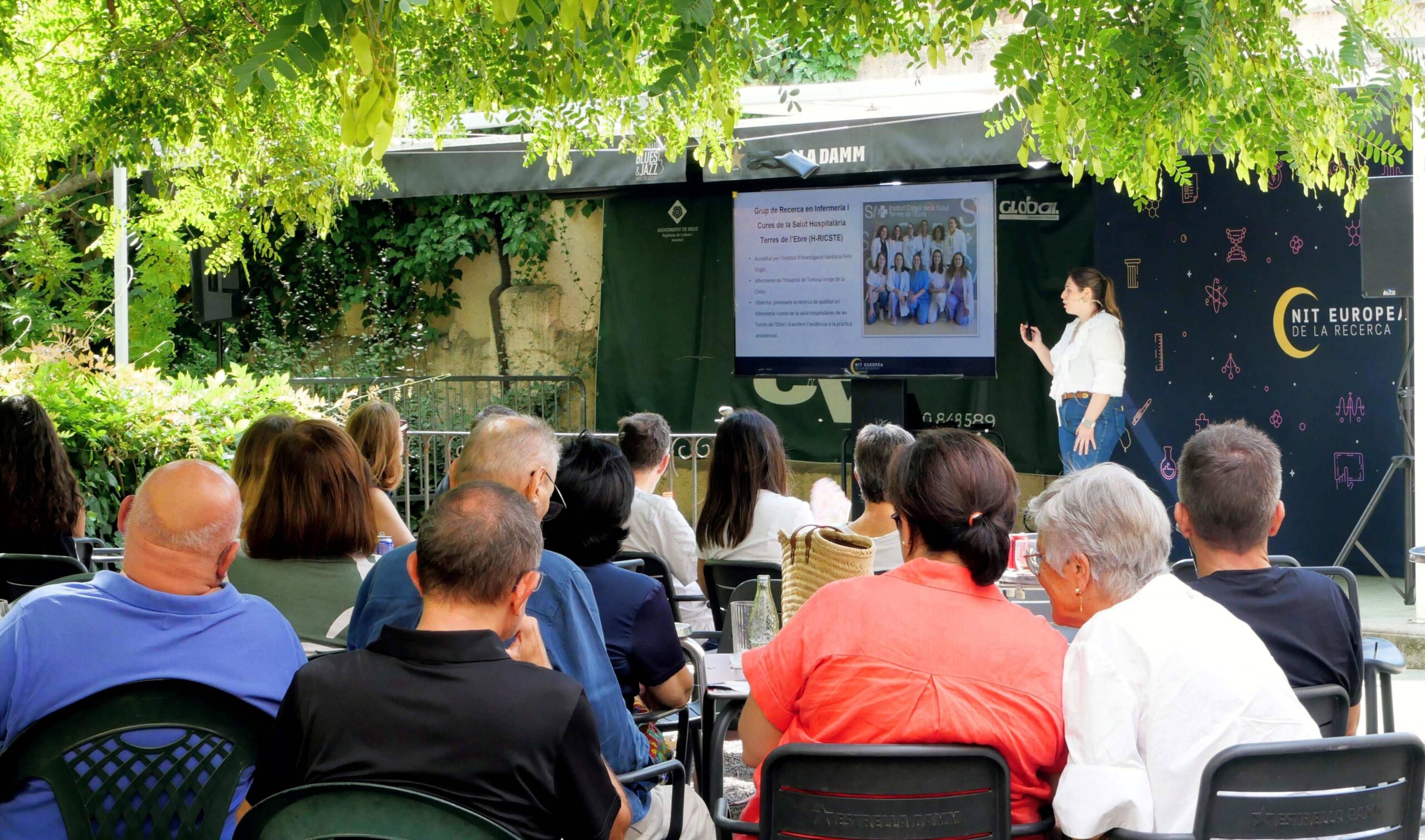
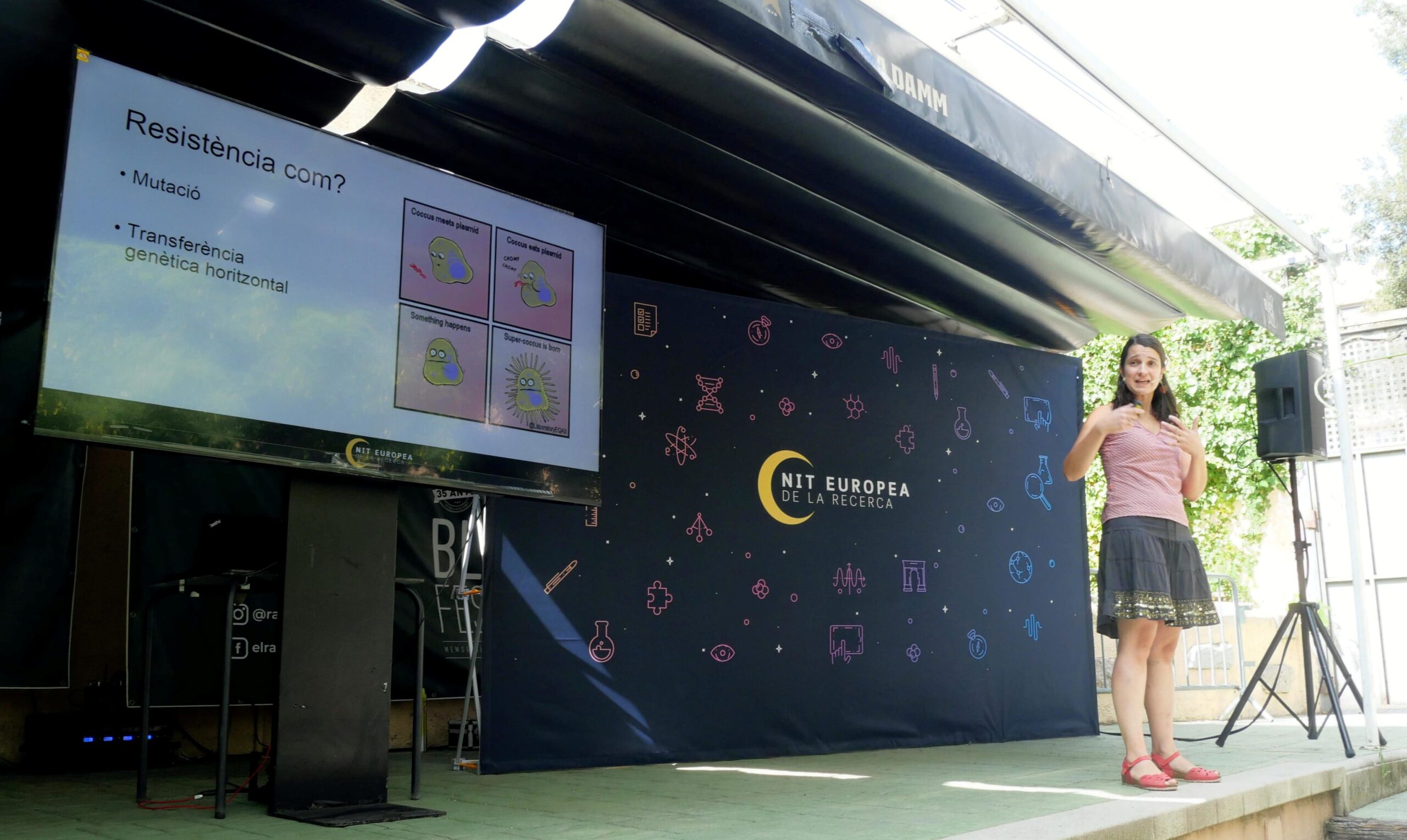
It will also visit secondary schools in the Tarragona area through informative talks and will return once again to Terres de l’Ebre with a science workshop fair to be held on October 3 in Tortosa’s Town Hall Square.
European Research Night is a major educational event held simultaneously in more than 300 European cities with the aim of bringing science closer to the public. In the Tarragona area, the URV has been coordinating the event since 2018, with a program that attracts thousands of people every year.
European Research Night is supported by the European Union’s Horizon Europe program and the collaboration of a consortium of Catalan universities and public institutions. The full program can be found at tarragona.nitdelarecerca.cat.
With a kick-off in Oslo, today marks the start of CancerWatch, a new EU Joint Action that will transform how Europe collects, harmonizes, and uses cancer data. Coordinated by the Norwegian Institute of Public Health and involving 92 partner organisations from 29 countries, CancerWatch will enhance the quality, comparability, and timeliness of data from population-based cancer registries (PBCRs) across Europe.

Accurate, complete, and up-to-date cancer data are essential for monitoring trends, identifying inequalities, and evaluating the impact of prevention, early detection, and treatment programmes, as well as Quality of Life and survival rates. CancerWatch will ensure that high-quality data are available to the European Cancer Information System (ECIS), which plays a central role in Europe’s Beating Cancer Plan and the European Cancer Inequalities Registry.
Why it matters
At present, cancer data across Europe vary in quality, coverage, and timeliness. Some regions lack full registry coverage, while others face delays of more than two years before data can be shared. CancerWatch will:
A pan-European effort
CancerWatch unites national cancer registries, public health institutes, research organisations, and ministries of health in a coordinated effort to strengthen Europe’s cancer intelligence. The Joint Action will deliver new tools, shared methodologies, and a roadmap for future cancer indicators, while also identifying opportunities to expand registry coverage into currently uncovered regions.
“By improving the quality and timeliness of Europe’s cancer data, CancerWatch will help ensure that policies and research are based on the best possible evidence – ultimately saving lives and enhancing quality of life for cancer survivors,” says Giske Ursin, Project Coordinator, Norwegian Institute of Public Health.
“Better data means better cancer control. With CancerWatch, we are building the foundations for more effective prevention, diagnosis, treatment, and equitable access to care across Europe,” adds Gijs Geleijnse, Scientific Coordinator, Norwegian Institute of Public Health.
Philippe Roux, Head of Unit for Cancer, health in all policies at the European Commission’s Directorate General for Health and Food Safety emphasizes the importance of CancerWatch. “The European Cancer Inequalities Registry (ECIR) is a vital policy instrument that helps EU Member States identify inequalities in cancer prevention, care, and outcomes, and the areas that can be improved. I strongly encourage all countries and stakeholders to use it. At its core, the ECIR relies on high-quality, population-based cancer data. Through the CancerWatch Joint Action, we will strengthen this foundation and deliver timely insights to reduce cancer inequalities across Europe.”
Background
Population-based cancer registries have been the backbone of cancer surveillance in Europe for decades, enabling countries to track incidence, mortality, and survival. However, differences in legal frameworks, interoperability, and resources mean that data completeness and timeliness vary widely. CancerWatch builds on the work of the European Network of Cancer Registries (ENCR), the Joint Research Centre (JRC), and international partners such as the International Agency for Research on Cancer (IARC), aligning efforts to deliver faster, more reliable insights.
About the project
For more information, visit: www.encr.eu/CancerWatch
The Clinical Research Unit (UIC) will allow clinical trials of medicines to be carried out on patients, from the most experimental phase to the final stage when their use is authorized
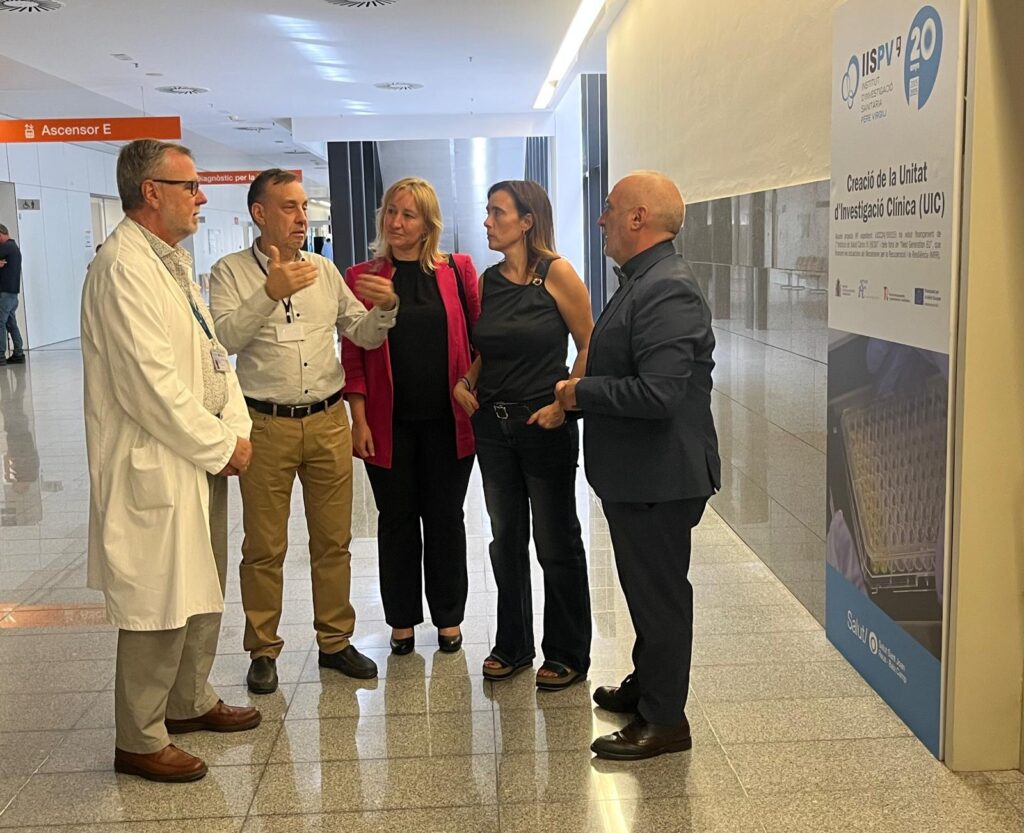
The Secretary of State for Science, Innovation and Universities, Juan Cruz Cigudosa, visited the facilities of the Pere Virgili Health Research Institute (IISPV), located in the Sant Joan University Hospital in Reus. The purpose of the visit was to learn about the development of the new Clinical Research Unit (UIC), a facility that will make it possible to carry out clinical trials with medicines on local patients in all phases—from phase 1, the most experimental, to phase 4, the final stage after which the medicine is approved for use. The CRU will occupy 500 m² and will be located inside the Sant Joan University Hospital in Reus. Its construction is supported by €4,300,000 in funding from the Carlos III Health Institute, the leading biomedical research organization under the Ministry of Science, Innovation and Universities.
During the visit, the Secretary of State was accompanied by the Government’s Deputy Representative in Tarragona, Elisabet Romero; the Mayor of Reus, Sandra Guaita; the City Councillor for Economic Promotion and Knowledge, Josep Baiges; the President of the IISPV Governing Board and Director of Health Services in Tarragona, Marta Milà; and other members of the IISPV Governing Board. Juan Cruz Cigudosa emphasized that this is an important project that will become a reference point for clinical research in southern Catalonia. He also highlighted the importance of giving hospitals across the region access to this kind of infrastructure. In addition, he pointed out that “this is one of the highest-rated projects in a national funding call worth €45 million. This new unit has received almost 10% of the total budget available in that call, which was open to projects from all over Spain.”

The Mayor of Reus, Sandra Guaita, added that “the amount of funding provided by the State shows that this is a strong project that will have a direct impact on citizens, as it will allow more equal access to medicines—something that used to happen only in large cities.” In the same vein, the Director of IISPV, Joan Vendrell, explained that “this Clinical Research Unit will serve the entire province and benefit 850,000 people, from university hospitals to regional hospitals in different health areas.” He also said: “We would even like pharmacies to help share information about the studies being carried out, so that people can learn about them and, if they wish, take part.”
Since the funding was announced in early 2025, the tendering process for the construction work has already started, and part of the necessary equipment has been ordered. In terms of staff, six people have already joined IISPV to work directly with the CRU: two data managers, one administrative staff member, one radiology technician, and two nurses. The unit is expected to be operational by the end of 2026.
The IISPV is organising the activity for Saturday 20 September at 12 p.m. at the Racó de la Palma in Reus, and it will be led by researchers from local research centres
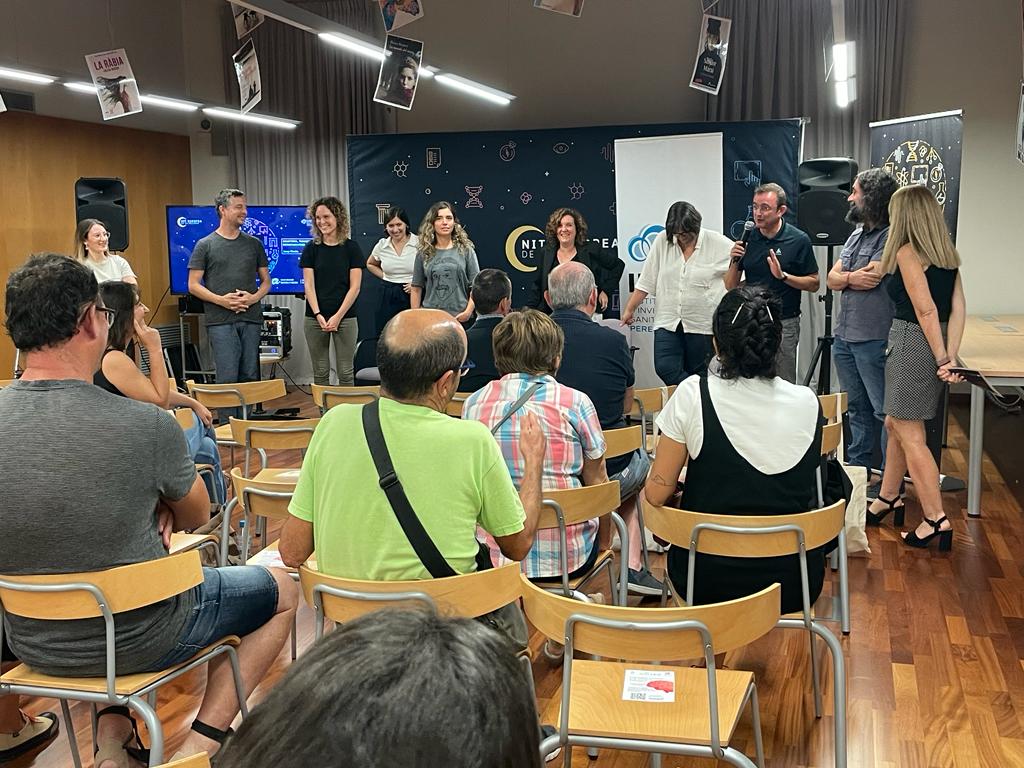
On Saturday 20 September at 12 p.m., the Racó de la Palma in Reus will host the science microtalks, an activity included in the European Researchers’ Night. The goal is to bring scientific research closer to the public in a friendly, accessible and engaging way.
The event is organised by the Institut d’Investigació Sanitària Pere Virgili (IISPV), in collaboration with the Universitat Rovira i Virgili (URV) and other research centres in the region. Researchers from different fields will share, in 10-minute talks, the latest advances in health, sustainability, energy and well-being.
Topics will include the effects of microplastics on the intestine, the role of the Mediterranean diet during pregnancy, patient safety in critical situations, responsible use of antibiotics, psychiatric disorders, and key ideas for a fair and sustainable energy transition.
The speakers will be:
Celia Uroz Mas – Efectes dels microplàstics en el nostre intestí
Sergi Danés – Del sol al combustible: energia neta per a una societat sostenible
Sara Bernardo Castro – Dieta mediterrània durant l’embaràs: modelant el desenvolupament cerebral i psicològic dels fills
Ruth Tortosa Alted – La transferència de cures en malaltia crítica: un repte de seguretat del paciente
Marta Llorens Fons – Antibiòtics: manipula’ls amb cura!
Sergi Saladié Gil – Bases per a una transició energètica justa i sostenible
Elisabet Vilella Cuadrada – Trastorns psiquiàtrics: factors de risc i factors protectors
L’activitat s’adreça a un públic general, amb un format distès i accessible, i forma part del conjunt d’actes que el IISPV impulsa per fomentar la cultura científica i connectar la recerca amb la societat.